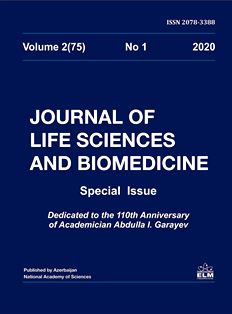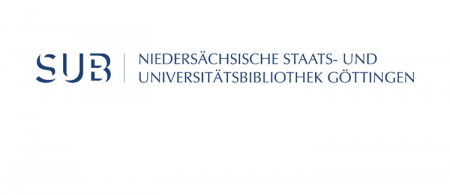
The role of neurochemical systems of the brain in the regulation of the hippocampal theta-rhythm
Research article: The role of neurochemical systems of the brain in the regulation of the hippocampal theta-rhythm
Author: R.M. Baghirova
Azerbaijan State Academy of Physical Education and Sport, 98a Fatali Khan Khoyski Str., Baku AZ 1072, Azerbaijan;
For correspondence: rafiga_bagirova1@mail.ru
Accepted for publication: 03 April 2020
Abstract:
In chronic experiments on the rabbits it has been shown that electric destruction of the dorsal amyg- dalo-fugal pathway leads to complete and persistent blockade of hippocampal theta rhythm in cont- rast to the ventral amygdalo-fugal pathway. In intact animals, electro- and chemostimulations of vari- ous limbic structures of the brain (amygdala, hypothalamus, reticular formation, medial septum nuc- leus) lead to the formation of well pronounced theta rhythm in the hippocampus, but after destructi- on of the dorsal amygdalo-fugal pathway no theta-rhythm in this structure was observed. Restoration of hippocampal EEG took place under the intra-hippocampal application of carbocholine and strychnine. It is proposed that one of the necessary conditions for the regulation of excitability of hip- pocampal neurons is the integrity of the dorsal amygdalo-fugal pathway through which the regula- tory influences of the amygdala on the hypothalamic neuro-secretory cells are realized.
Keywords: Hippocampal theta-rhythm, dorsal and ventral amygdalo-fugal pathways, electrical and che- mo-stimulation, destruction
References:
Berridge C.W., Espana R.A. (2000) Synergistic sedative effects of nonadrenergic α1 and α2 re-ceptor blockade in forebrain electroencepha-log-raphic and behavior indices. J. Neuroscience, 99(3): 495- 505.
Endroczi E. (1972) Role of glucococrticoids in controlling pituitary-adrenal function. Acta med. Acad. Scient. Hung., 29(1-2): 49-59.
Fujimori B., Yokota T., Ishibashi Y., Takei T. (1958) Analysis of the electroencephalogram of children by histoqram method. EEG and Clin. Neurophysiol., 10(2): 241-252. R.M. Baghirov
Gasanov G.G., Kasimov A.É., Bagirova R.M. (1989) Contributions of the amygdala and hypothalamus to the formation of hippocampal theta activity. Nauchnye Dokladi Vyss. Shkoly, Biol Nauki, №3: 51–53.
Kichigina V.F., Kutyreva E.V. (2002) Modulati-on of theta activity in the septo-hippocampal system by2-adrenoreceptor agonist clonidine. Zh. Higher Nervous Activity, 52(2): 195-204.
Kitchigina V.F. (2006) Regulation mechanisms and functional significance of theta oscillations in the septohippocampal system of the brain. Abstract of dissertation for the degree of Doctor of Biological Sciences, Moscow, Pushchino.
Kitchigina V., Popova I., Sinelnikova V., Mal-kov A., Astasheva E, Shubina L., Aliev R. (2013) Disturbances of septohippocampal theta oscillations in the epileptic brain: Reasons and consequences. Experimental Neurology, 247: 314-327.
Lishshak K., Endreci E. (1967) Neuroendocrine regulation of adaptation activity. Budapest: Academy of Sciences of Hungary, 145 p.
Mysin I.E., Kitchigina V.F., Kazanovich Y. (2015) Modeling synchronous theta activity in the medial septum: key role of local communi-cations between different cell populations. J. Comput. Neurosci., 39(1): 1-16.
Sapronov N.S. (1998) Pharmacology of the hyperphoresis adrenal system. SPb .: Special lit., 336 p.
Smythe J.W., Christie B.R., Colom L.V. et al. (1991) Hippocompal theta field activity and the-ta-on/theta-off all discharges are controlled by an ascending hypothalamo-septal pathway. J. Neuroscience, 11: 2241-2248
Steriade M. (1996). Arousal: revisiting the reticu-lar activating system. Science, 272: 225-226.
Vertes R.P. (1992). PHA-L analysis of projecti-ons from in the supramammillary nucleus in the rat. J. Comp. Neurology, 326: 595-620.























